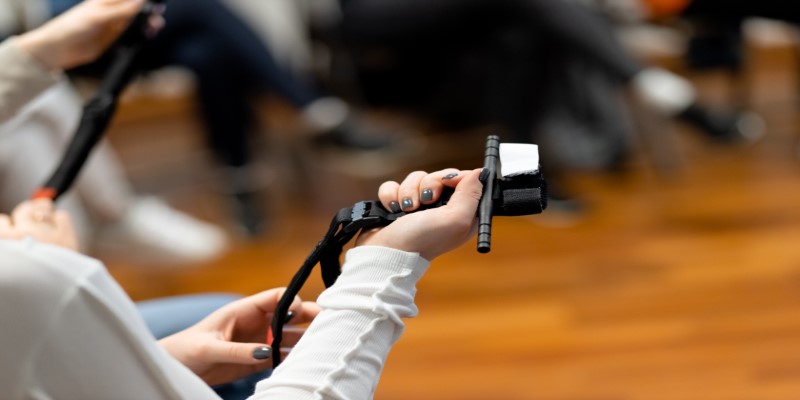In the world of first aid, time is of the essence, underscoring the critical role of a fully stocked first aid kit. Amidst various items that enhance a kit's effectiveness, the tourniquet emerges as paramount. This article explores the pivotal importance of a tourniquet, navigating through topics like the Tourniquet Controversy, offering guidance on its timely use, spotlighting the Combat Application Tourniquet (CAT), and shedding light on common errors in tourniquet application. Recognizing the significance of swift and informed action, especially in addressing severe bleeding, underscores the tourniquet's role as a life-saving tool in the dynamic landscape of first aid.
The Tourniquet Controversy
The use of tourniquets has been a subject of controversy in the medical community for many years. Traditionally, tourniquets were associated with potential complications such as nerve damage, tissue ischemia, and limb loss. This perception led to reluctance in their use and fueled the debate over their efficacy. Nevertheless, the evolution in medical understanding and technological progress has altered this storyline.
Modern tourniquets are designed with precision, incorporating features that minimize collateral damage. The Tourniquet Controversy revolves around the balance between preventing severe bleeding and avoiding potential complications. While the debate persists, the consensus is shifting towards acknowledging the life-saving potential of tourniquets when used correctly and judiciously.
When to Use a Tourniquet
Understanding when to use a tourniquet is paramount, as its application can be a decisive factor in preventing life-threatening bleeding. The use of a tourniquet is indicated in specific emergency scenarios where conventional methods prove inadequate. Here are key situations where the application of a tourniquet is warranted:
Severe Trauma: In cases of severe trauma resulting from accidents or falls, where major blood vessels or arteries are compromised, a tourniquet becomes a crucial intervention. Notably, arterial injuries characterized by pulsatile bleeding or blood spurting require immediate tourniquet application to prevent excessive blood loss.
Amputations: When a limb is amputated or partially severed, controlling bleeding becomes challenging. The application of a tourniquet proximal to the amputation site is imperative to quickly restrict blood flow and minimize the risk of exsanguination.
Inaccessible or High-Risk Areas: In situations where bleeding occurs in areas difficult to reach or poses a high risk of injury during attempts to control bleeding by other means, using a tourniquet becomes a pragmatic choice.
Failed Hemostatic Measures: If direct pressure and other hemostatic measures prove ineffective in controlling severe bleeding, a tourniquet becomes a critical last resort to prevent life-threatening bleeding.
It is essential to exercise discernment and reserve tourniquet use for situations where the benefits outweigh potential risks. While tourniquets are effective in staunching severe bleeding, they should not be used indiscriminately. The timely and appropriate application is paramount to maximize their life-saving potential.
Combat Application Tourniquet (CAT)
The Combat Application Tourniquet (CAT) is a vital tool in emergencies, known for its effectiveness and user-friendly design. Developed for both military and civilian use, the CAT is designed for simplicity and rapid application.
The CAT is made of strong materials like nylon, featuring a buckle with a windlass rod. This rod allows precise control over the applied pressure when tightening the tourniquet. Its design ensures quick and secure application, making it accessible to trained medical professionals and individuals without extensive medical knowledge.
Notably, the CAT is compact and lightweight, making it easy to include in any first aid kit. Its versatility makes it suitable for various settings, from military operations to everyday emergencies. The windlass system in the CAT allows users to tighten the tourniquet with control, preventing unnecessary damage to surrounding tissues.
One key advantage is its user-friendliness, allowing for self-application. This is crucial in situations where immediate medical help may not be available. The CAT's proven effectiveness in real-world scenarios has led to its widespread adoption, becoming a standard item in military first aid kits and gaining recognition in civilian emergency response protocols.

Common Tourniquet Mistakes
In applying tourniquets, common mistakes can compromise effectiveness and potentially lead to complications. Awareness of these pitfalls is essential for individuals equipped with tourniquets to ensure proper and safe use. Here are some prevalent mistakes associated with tourniquet application:
Insufficient Tightening
One common error is applying the tourniquet too loosely, which may result in inadequate blood flow occlusion. Applying a tourniquet necessitates adequate tightening to effectively cease arterial blood flow. However, it is imperative to exercise caution to prevent excessive force, as this may result in complications such as nerve damage or tissue injury.
Incorrect Placement
Proper placement of the tourniquet is crucial for its effectiveness. Placing the tourniquet too close to the wound or over a joint may impede its ability to control bleeding effectively. The tourniquet should be applied proximal to the bleeding site, targeting the arterial supply for optimal results.
Prolonged Application
Leaving the tourniquet on for an extended period can lead to complications such as ischemic damage to the limb. Prolonged use should be avoided, and the tourniquet should be removed as soon as professional medical assistance is available to restore adequate blood flow to the affected limb.
Failure to Secure the Tourniquet
A loosely secured tourniquet may slip or become dislodged, compromising its ability to control bleeding. It is essential to secure the tourniquet tightly to maintain consistent pressure and prevent unintentional loosening during the critical application period.

Conclusion
In the realm of first aid, a tourniquet emerges as a pivotal tool for mitigating life-threatening bleeding. The Tourniquet Controversy highlights the evolution of medical perspectives on its use, acknowledging its life-saving potential when applied judiciously.
Knowing when to use a tourniquet, recognizing the benefits of the Combat Application Tourniquet (CAT), and addressing common mistakes associated with its application contribute to the overall effectiveness of this critical intervention.




